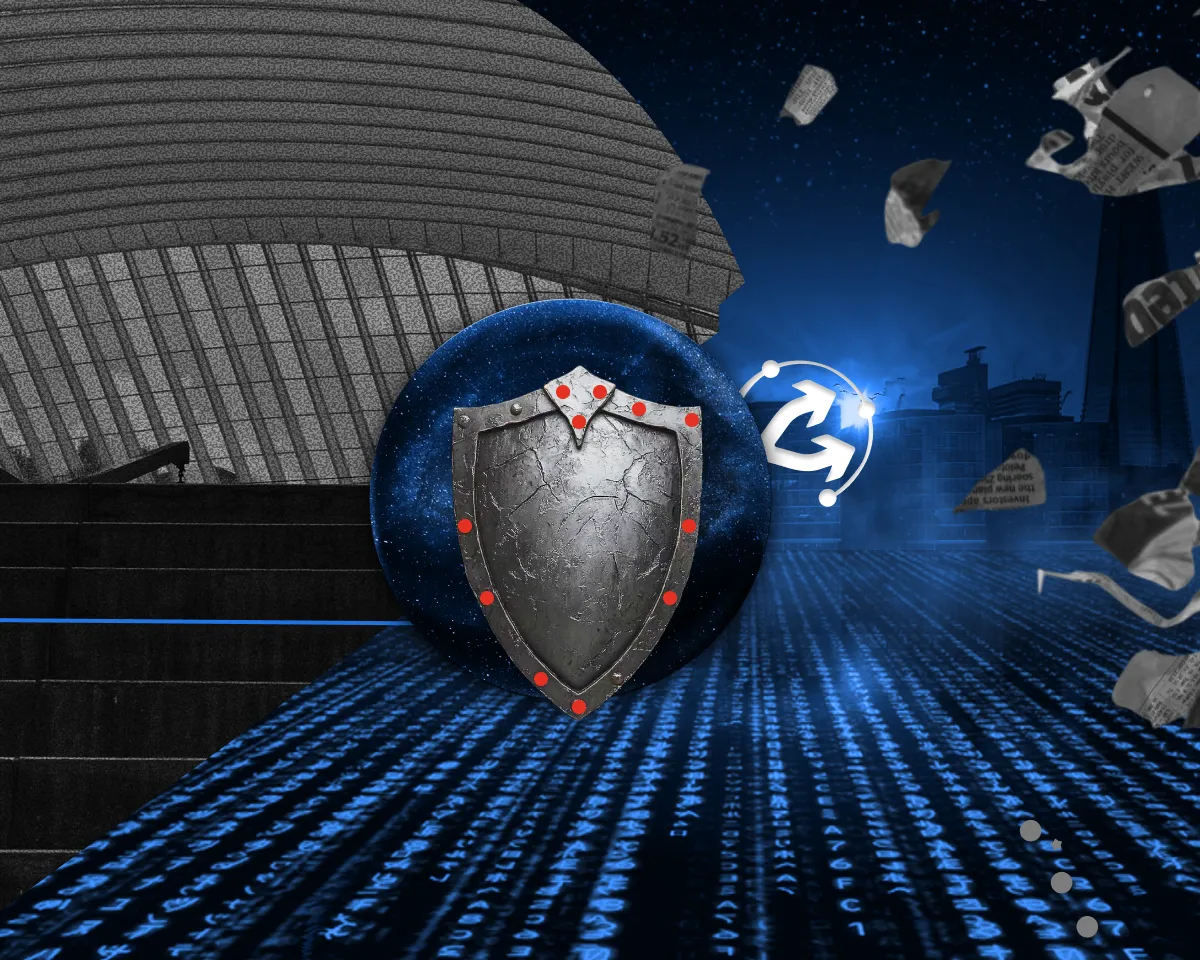Summary In this article, I review and explore techniques to gauge bitcoin’s risk relative to its reward and to assess its portfolio viability relative to other asset classes. We believe that the Sharpe Ratio’s use of total realized volatility may have overestimated bitcoin’s true risk. As of September 15, bitcoin’s Omega Ratio over the previous year was 1.29, upside returns outpacing downside returns by 29%. By David Puell Introduction This article is written not only for investors with an intermediate-to-advanced degree of knowledge about financial metrics, but also for bitcoin skeptics whose concerns persist even as the asset is maturing in institutional markets. During its 16-year history, conservative investors have observed that: “Bitcoin is too volatile,” or, more specifically, “Bitcoin’s returns are not worth the anxiety associated with its volatility.” In our view, such observations miss the nuances of bitcoin’s price history: they fail to separate its upside reward from its downside risk . As a result, we believe many, if not most, investors have underallocated to bitcoin in multi-asset portfolios. In this article, I review and explore techniques to gauge bitcoin’s risk relative to its reward and to assess its portfolio viability relative to other asset classes. The Sharpe Ratio A widely regarded financial metric, the Sharpe Ratio assesses the potential risk relative to reward of an asset, helping analysts and investors with financial modeling and portfolio optimization. Designed to measure the unit of reward per unit of risk, the Sharpe Ratio is constructed as follows: Interestingly, the Sharpe Ratio equates risk to an asset’s total realized volatility over time. While somewhat controversial, that notion is widely applied in financial analysis. 1 How does the Sharpe Ratio measure bitcoin’s risk relative to its reward? The chart below captures bitcoin’s mean returns and realized volatility—the numerator and denominator of the Sharpe Ratio, respectively—on a yearly basis over the past 14 years. 2 As of September 15, 2025, bitcoin’s yearly returns and volatility have averaged 76.4% and 44.1%, respectively. In other words, the rewards have been “worth” the risk. Source: Glassnode, as of September 15, 2025. For informational purposes only and should not be considered investment advice or a recommendation to buy, sell, or hold any particular security or cryptocurrency. Past performance is not indicative of future results. That said, we believe that the Sharpe Ratio’s use of total realized volatility may have overestimated bitcoin’s true risk. Why, we ask, should the volatility of upside returns penalize risk-adjusted returns? Financial research offers two meaningful alternatives that adjust for the volatility of upside returns. The Sortino Ratio Contrary to the Sharpe Ratio, the Sortino Ratio assumes that the risk of holding an asset is denoted by the downside volatility realized over time, as follows: In this measurement of risk-adjusted returns, the reward is penalized only by the volatility associated with negative returns—the true “pain” of holding bitcoin long term. Compared to total volatility, downside volatility is always lower, as shown in the red compared to the blue shaded areas below. 3 Source: Glassnode, as of September 15, 2025. For informational purposes only and should not be considered investment advice or a recommendation to buy, sell, or hold any particular security or cryptocurrency. Past performance is not indicative of future results. The chart above illustrates that the Sharpe Ratio demands a higher hurdle rate of return to break above a minimum acceptable risk compared to Sortino. In turn, the table below illustrates how, on average, the volatility hurdle implied by the Sharpe Ratio (79.7%) tends to be roughly one and a half times the volatility hurdle of the Sortino Ratio (47%). This implies a “premium” penalty of 70.5%—or 32.7 percentage points (pp)—presented by the Sharpe Ratio over the Sortino Ratio. Sharpe(Total Volatility) Sortino(Downside Volatility) Absolute Premium Relative Premium 2011 177.8% 94.1% 83.7 pp 88.9% 2012 79.6% 49.8% 29.8 pp 59.8% 2013 145.2% 87.2% 58 pp 66.5% 2014 75.2% 46.3% 28.9 pp 62.4% 2015 69.1% 45.5% 23.6 pp 51.9% 2016 48.5% 30% 18.5 pp 61.7% 2017 93.7% 50.2% 43.5 pp 86.7% 2018 81.5% 53.3% 28.2 pp 52.9% 2019 68.1% 38.3% 29.8 pp 77.8% 2020 73.2% 48.7% 24.5 pp 50.3% 2021 80.2% 46.2% 34 pp 73.6% 2022 63.6% 42.3% 21.3 pp 50.4% 2023 43.7% 21.8% 21.9 pp 100.5% 2024 53.3% 28.3% 25 pp 88.3% 2025 (YTD) 44.1% 23.7% 20.4 pp 86.1% Average 79.7% 47% 32.7 pp 70.5% Source: ARK Investment Management LLC, 2025, based on data from Glassnode, as of September 15, 2025. For informational purposes only and should not be considered investment advice or a recommendation to buy, sell, or hold any particular security or cryptocurrency. Past performance is not indicative of future results. Comparing the two ratios in the chart below, 4 the Sortino Ratio provides a more optimistic—and, in our view, more accurate—view of bitcoin’s risk. Source: Glassnode, as of September 15, 2025. For informational purposes only and should not be considered investment advice or a recommendation to buy, sell, or hold any particular security or cryptocurrency. Past performance is not indicative of future results. As of September 15, 2025, bitcoin’s year-over-year Sharpe and Sortino ratios were 1.7 and 3.2, respectively. The Omega Ratio Instead of accounting only for mean-variance (Sharpe) or downside deviation (Sortino), we now add the Omega Ratio to our analysis because of the clarity it lends to measuring the entirety of the return distribution. The Omega Ratio evaluates the probability-weighted gains versus losses, making it especially valuable in non-normal or fat-tailed distributions, such as crypto or assets where extreme outcomes are common. This simplified version of the Omega Ratio, also known as Gain/Loss Ratio compares bitcoin’s cumulative positive returns against its cumulative negative returns, defining every unit of reward per unit of risk in a direct, linear fashion. In this case, we assume 0% returns as the minimum “hurdle” the investor would expect for holding the asset. As with the Sortino Ratio, we believe the Omega Ratio portrays a more accurate measurement of risk-adjusted returns. To provide color with respect to bitcoin, the chart below differentiates between the numerator and denominator of bitcoin’s Omega Ratio. Source: Glassnode, as of September 15, 2025. For informational purposes only and should not be considered investment advice or a recommendation to buy, sell, or hold any particular security or cryptocurrency. Past performance is not indicative of future results. As of September 15, bitcoin’s Omega Ratio over the previous year was 1.29, upside returns outpacing downside returns by 29%, as shown below. Source: Glassnode, as of September 15, 2025. For informational purposes only and should not be considered investment advice or a recommendation to buy, sell, or hold any particular security or cryptocurrency. Past performance is not indicative of future results. Bitcoin In A Portfolio: Sortino And Omega Case Studies Bitcoin’s Risk-Adjusted Returns We begin this case study by comparing bitcoin’s various risk-adjusted return ratios against those of four major asset classes: US equities, US bonds, US real estate, and gold. First, in the table below, we show how bitcoin’s Sharpe Ratio is higher, on average, than other asset classes over various 5-year periods. Note: The indices used as asset class representatives for the portfolio optimizations in this study are MSCI US Broad Market Index (MZUSB, US stocks), Bloomberg U.S. Aggregate Float Adjusted Index (LBUFTRUU, US bonds), MSCI US REIT Index (RMZ, US real estate), and LBMA Gold Price PM (GOLDLNPM, gold). Source: ARK Investment Management LLC, 2025, based on data from PortfolioVisualizer.com as of December 31, 2024. For informational purposes only and should not be considered investment advice or a recommendation to buy, sell, or hold any particular security or cryptocurrency. Past performance is not indicative of future results. That said, if we compare bitcoin’s Sortino Ratio to that of the other asset classes, the difference—or “delta”—is even more striking, with bitcoin increasing its gap considerably when compared to equities, the second top performer. Note: The indices used as asset class representatives for the portfolio optimizations in this study are MSCI US Broad Market Index (MZUSB, US stocks), Bloomberg U.S. Aggregate Float Adjusted Index (LBUFTRUU, US bonds), MSCI US REIT Index (RMZ, US real estate), and LBMA Gold Price PM (GOLDLNPM, gold). Source: ARK Investment Management LLC, 2025, based on data from PortfolioVisualizer.com as of December 31, 2024. For informational purposes only and should not be considered investment advice or a recommendation to buy, sell, or hold any particular security or cryptocurrency. Past performance is not indicative of future results. Lastly, bitcoin’s Omega Ratio, similar to the Sortino Ratio, also results in a larger gap between the cryptocurrency and its legacy counterparts, as shown below. Note: The indices used as asset class representatives for the portfolio optimizations in this study are MSCI US Broad Market Index (MZUSB, US stocks), Bloomberg U.S. Aggregate Float Adjusted Index (LBUFTRUU, US bonds), MSCI US REIT Index (RMZ, US real estate), and LBMA Gold Price PM (GOLDLNPM, gold). Source: ARK Investment Management LLC, 2025, based on data from PortfolioVisualizer.com as of December 31, 2024. For informational purposes only and should not be considered investment advice or a recommendation to buy, sell, or hold any particular security or cryptocurrency. Past performance is not indicative of future results. Based on the averages, the difference—“delta”—between each bitcoin risk-adjusted return ratio and the second best per table equals +0.22 pp for Sharpe, +2.18 pp for Sortino, and +0.85 pp for Omega—confirming how bitcoin tends to stand out even more among asset classes when discounting penalties for upward volatility. Portfolio Optimization Next, for the purposes of portfolio optimization, we believe that bitcoin’s risk-adjusted returns are best measured by penalizing only for downside risks—by compartmentalizing, in other words, the realized “pain” or cost of holding the asset from the benefits of upward momentum. As a result, we will again use the Sortino and Omega Ratios to assess bitcoin’s place in an optimal portfolio, using the Sharpe Ratio as our benchmark. Furthermore, our comparison frames bitcoin as a component in a portfolio that also comprises representatives of the typical major asset classes—once again, equities, bonds, real estate, and gold—using the Sharpe, Sortino, and Omega Ratios across a rolling 5-year window between year-end from December 2015 to 2024. For the purposes of running these hypothetical portfolio scenarios, we assume the typical risk-free rate, with target expected returns for Sortino and Omega of 0%—an absolute minimum hurdle. Allocation In Max Sharpe Optimization Allocation In Max Sortino Optimization Allocation In Max Omega Optimization 2011-2015 0.8% 6.7% 4.5% 2012-2016 1.0% 8.9% 8.3% 2013-2017 1.0% 10.0% 8.4% 2014-2018 2.7% 4.2% 3.2% 2015-2019 4.3% 5.1% 4.1% 2016-2020 4.7% 5.4% 2.5% 2017-2021 5.5% 4.0% 2.1% 2018-2022 7.0% 4.5% 3.0% 2019-2023 20.8% 23.1% 21.7% 2020-2024 27.0% 21.1% 18.2% Average 7.5% 9.3% 7.6% Note: The green cells in the table represent when the Sortino or Omega Ratio is higher than the Sharpe Ratio. The indices used as asset class representatives for the portfolio optimizations in this study are MSCI US Broad Market Index (MZUSB, US stocks), Bloomberg U.S. Aggregate Float Adjusted Index (LBUFTRUU, US bonds), MSCI US REIT Index (RMZ, US real estate), and LBMA Gold Price PM (GOLDLNPM, gold). Source: ARK Investment Management LLC, 2025, based on data and calculations from PortfolioVisualizer.com as of December 31, 2024. For informational purposes only and should not be considered investment advice or a recommendation to buy, sell, or hold any particular security or cryptocurrency. Past performance is not indicative of future results. During the last 10 years, across a 5-year horizon, the Sortino and Omega maximizations on average have out-recommended bitcoin compared to Sharpe—+1.8 pp and +0.1 pp, respectively. Additionally, Sortino suggests higher bitcoin allocations than Sharpe 70% of the time, while Omega—a more conservative metric—suggests larger portfolio allocations 50% of the time, as shown below. Source: ARK Investment Management LLC, 2025, based on data and calculations from PortfolioVisualizer.com as of December 31, 2024. For informational purposes only and should not be considered investment advice or a recommendation to buy, sell, or hold any particular security or cryptocurrency. Past performance is not indicative of future results. If we average the Sharpe, Sortino, and Omega allocations across the last 10 years, bitcoin cross-averages a recommended portfolio share of 8.1% per year. If only Sortino and Omega are considered, the cross-average recommended allocation becomes 8.4% per year. We hope that this article helps investors measure bitcoin’s risk in all its nuances, potentially serving as a guide for those seeking to measure risk when assessing bitcoin, or any asset, as a part of their portfolio. Important Information Regarding Bitcoin Bitcoin is a relatively new asset class, and the market for bitcoin is subject to rapid changes and uncertainty. Bitcoin is largely unregulated and bitcoin investments may be more susceptible to fraud and manipulation than more regulated investments. Bitcoin is subject to unique and substantial risks, including significant price volatility and lack of liquidity, and theft. Bitcoin is subject to rapid price swings, including as a result of actions and statements by influencers and the media, changes in the supply of and demand for bitcoin, and other factors. There is no assurance that bitcoin will maintain its value over the long term. ARK strongly encourages any investor considering an investment in bitcoin or any other digital asset to consult with a financial professional before investing. All statements made regarding bitcoin are strictly beliefs and points of view held by ARK and are not recommendations by ARK to buy, sell or hold bitcoin. Historical results are not indications of future results. Footnotes As an example, an article by Voss and Howard clarifies how volatility does not necessarily equal risk. See Voss, J., and T. Howard. 2017. “The Active Equity Renaissance: New Frontiers of Risk.” Enterprising Investor. CFA Institute. Mean returns are annualized by multiplying by 365 and realized volatility is annualized by multiplying standard deviation times the root of 365. In this section, mean returns are annualized by multiplying by 365 and realized volatilities are annualized by multiplying the respective standard deviations times the root of 365. We annualize the ratios by dividing the unscaled mean returns by the standard deviation, then multiplying the result by the root of 365. Disclosures ARK's statements are not an endorsement of any company or a recommendation to buy, sell or hold any security. For a list of all purchases and sales made by ARK for client accounts during the past year that could be considered by the SEC as recommendations, click here . It should not be assumed that recommendations made in the future will be profitable or will equal the performance of the securities in this list. For full disclosures, click here . ©2021-2026, ARK Investment Management LLC (“ARK” ® "ARK Invest"). All content is original and has been researched and produced by ARK unless otherwise stated. No part of ARK’s original content may be reproduced in any form, or referred to in any other publication, without the express written permission of ARK. The content is for informational and educational purposes only and should not be construed as investment advice or an offer or solicitation in respect to any products or services for any persons who are prohibited from receiving such information under the laws applicable to their place of citizenship, domicile or residence. Certain of the statements contained on this website may be statements of future expectations and other forward-looking statements that are based on ARK's current views and assumptions, and involve known and unknown risks and uncertainties that could cause actual results, performance or events to differ materially from those expressed or implied in such statements. All content is subject to change without notice. All statements made regarding companies or securities or other financial information on this site or any sites relating to ARK are strictly beliefs and points of view held by ARK or the third party making such statement and are not endorsements by ARK of any company or security or recommendations by ARK to buy, sell or hold any security. The content presented does not constitute investment advice, should not be used as the basis for any investment decision, and does not purport to provide any legal, tax or accounting advice. Please remember that there are inherent risks involved with investing in the markets, and your investments may be worth more or less than your initial investment upon redemption. There is no guarantee that ARK's objectives will be achieved. Further, there is no assurance that any strategies, methods, sectors, or any investment programs herein were or will prove to be profitable, or that any investment recommendations or decisions we make in the future will be profitable for any investor or client. Professional money management is not suitable for all investors. For full disclosures, please go to our Terms & Conditions page. The Adviser did not pay a fee to be considered for or granted the awards. The Adviser did not pay any fee to the grantor of the awards for the right to promote the Adviser's receipt of the awards nor was the Adviser required to be a member of an organization to be eligible for the awards. For full Award Disclosure, please go to our Terms & Conditions page. Past performance is not indicative of future performance. Original Post Editor's Note: The summary bullets for this article were chosen by Seeking Alpha editors.















